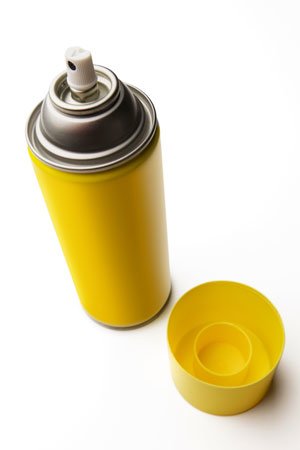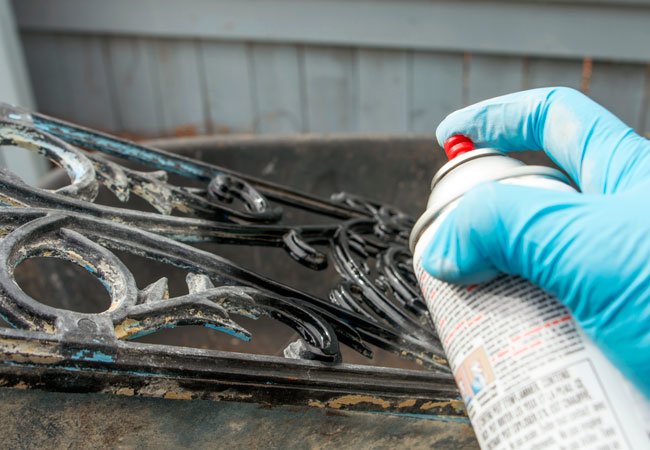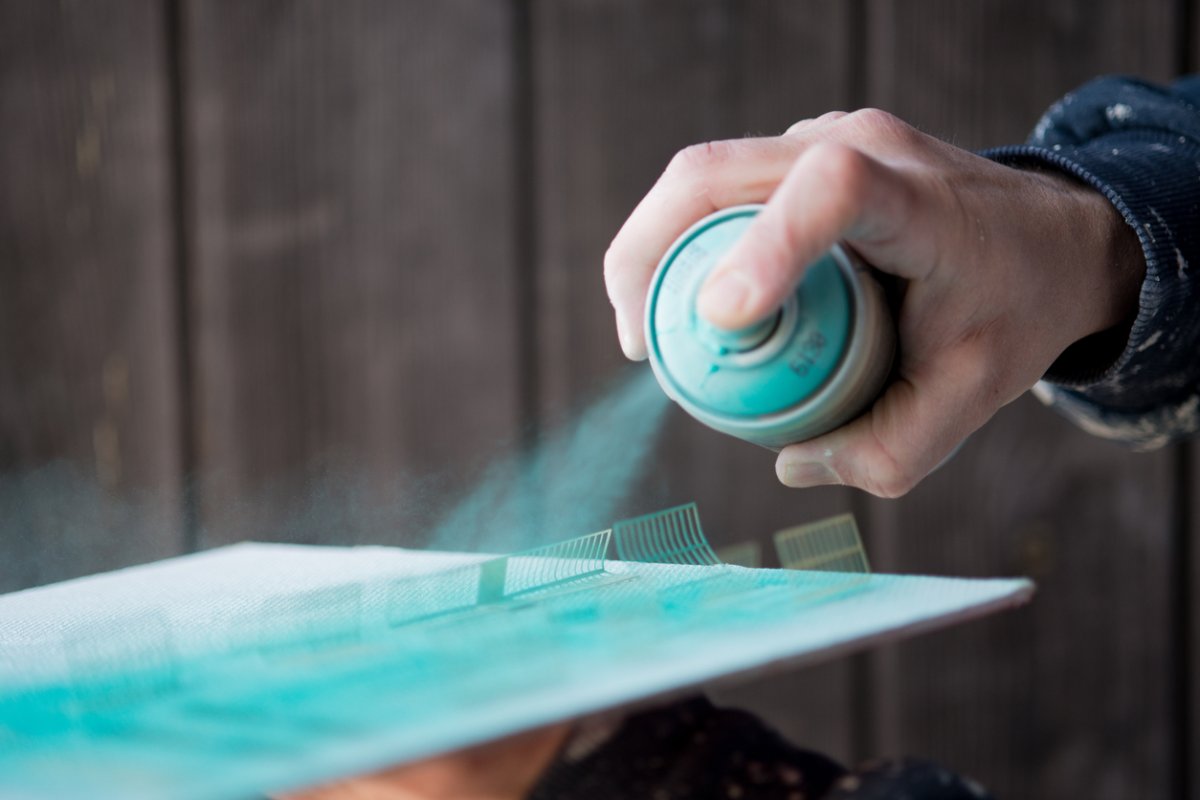We may earn revenue from the products available on this page and participate in affiliate programs. Learn More ›
When you need a quick, cool upgrade that doesn’t cost a bundle, spray paint is hard to beat. A host of exciting new hues and finishes have taken spray paint to the next level, and you can use it on all sorts of surfaces, from concrete blocks and stepping stones to wood, plastic, or metal furniture. But getting pro-quality results does take a bit of skill, so read on before you spray away!
DO Choose the Right Location
As with any painting project, you’ll need to work in a well-ventilated spot. If the weather is pleasant, you can take it outside, but beware of breezes. Wind can mess with your ability to get good coverage, and it can blow dirt onto your piece, which will be difficult to remove and will mar the finish. If working indoors, open all windows for cross ventilation, or consider painting in the garage, near the open door.

DON’T Slack on Prep Work
Prep is key to any successful paint job. So, depending on the material you’re painting, do what’s necessary to mend any scratches or holes, then sand to smooth out rough spots. Wash your piece with mild detergent solution, rinse with water, and allow it to dry thoroughly.
DO Practice Protection
There will be overspray, so cover the surrounding area with drop cloths or newspaper. If you’re working on something small, contain overspray by setting the piece inside a cardboard box. Perhaps more crucial is protecting yourself. Aerosol paint can get into eyes and lungs, so wear goggles and a dust mask or respirator. Gloves are a good idea, too, and remember that overspray on the floor can stick to the bottom of your shoes—remove footwear and check your soles before leaving the area to avoid tracking paint.
DON’T Rush It
For optimal, even coverage, apply spray paint in several thin coats. Don’t worry if you can see through the first or even the second coat. Patience is a virtue here.

DO Use a Sweeping Motion
Waving the can randomly will result in uneven results. Instead, hold the can six to eight inches from the surface and use even, horizontal strokes, sweeping from left to right, then right to left. Be careful not to hesitate in any one spot or you’ll get drips.
DON’T Have a Heavy Trigger Finger
To avoid glops and spots—and to conserve paint—spray in short spurts rather than a constant stream. Listen for brief bursts of air coming from the can, as opposed to a long, steady hiss.
DO Allow the Paint to Cure Completely
Spray paint does dry quickly, but it usually requires at least 24 hours to cure completely. Resist the urge to move your piece or replace any hardware you’ve removed until you’ve reached the curing time indicated on the can. A scratch or fingerprint late in the game will be difficult to fix.

